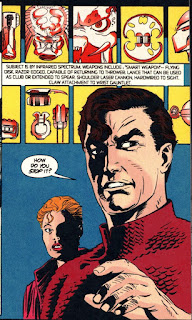‘Empire of the East’ (558 pp.) was published by Ace Books in July 1980. The rather mediocre cover illustration is by Enric.
A newer edition was published by Tor Books in 2003
Fred Saberhagen (1930 – 2007) produced a long list of novels and short stories in the genres of sci-fi and fantasy over an interval of more than 35 years, from the early 60s to the late 90s. His best known works – and the ones with which I was most familiar - are those in the ‘Berserker’ franchise.
Much like other writers of the same era, such as Harry Harrison, Mack Reynolds, Keith Laumer, Larry Niven, and David Drake, Saberhagen ‘wrote for a living’, supplying content for the sci-fi digest, and burgeoning paperback, marketplaces.
While his writing career coincided with the heyday of the New Wave movement, Saberhagen was indifferent towards it, a stance which apparently was reciprocated by the movement’s foremost editors (Saberhagen never appeared in any of Harlan Ellison’s Dangerous Visions anthologies, nor did he appear in any of the 21 volumes of Damon Knight’s Orbit series).
‘Empire of the East’ is my first try at accessing the substantial body of fantasy literature that Saberhagen produced. It’s an omnibus edition containing heavily revised versions of three novels: ‘The Broken Lands’ (1968), ‘The Black Mountains’ (1971), and ‘Changeling Earth’ (1973; retitled ‘Ardneh’s World’ for this omnibus).
[ Additional entries in the so-called ‘Earth’s End’ franchise include the ‘Book of Swords’ and ‘Book of Lost Swords’ novels and stories, which Saberhagen maintained into the early 1990s. ]
‘Empire’ is set in a future America, some 1,000 years after World War Three ended civilization. Magic now is the dominant force in the land, although the few surviving artifacts of the technological age are much prized by the inhabitants of the small settlements that constitute the population of the continent.
All is not well in this future America. John Ominor, the malevolent Emperor of the East, is intent on conquering the communities of the West Coast and subsuming them into the eponymous Empire. From a redoubt in the Broken Mountains, Ominor's satrap Ekumen dispatches groups of soldiers to rape, pillage, murder, and enslave the free peoples. Unless a resistance can be mounted, the entire West will fall under the sway of the Empire.
Rolf, a teenager from a small farm in what was California, has personally witnessed the depredations of the Empire of the East, and seeks vengeance. Allying himself with a group of rebels that includes Mewick, the master of combat; Gray and Loford, the most powerful mages of the West; and the single-minded generals Thomas and Duncan, Rolf will take the fight to the Broken Mountains…..the Black Mountains…..and beyond them, on into the East, and against John Ominor himself.
In my opinion, ‘Empire’ is a five-star omnibus. I went through its 558 pages with unexpected ease. The fact that it was written in the late 60s – early 70s for the paperback sci-fi market means that it avoids the ponderous exposition and extravagant world-building that define modern-day fantasy novels (for example, 2007's The Lies of Locke Lamora, at 736 pages, is but the first of the three volumes, all over 700 pages each, comprising the 'Gentlemen Bastards' trilogy).
With ‘Empire’, Saberhagen demonstrates that it’s possible to create memorable characters, involved in multiple plot threads, without needing to burden the reader with page after page of dense descriptive text.
Saberhagen introduces continuous shifts and turns in the plot to keep the action moving. He also keeps the far-future setting of ‘Empire’, with its mixtures of magic and science, exotic and unconventional (for example, the latter chapters of ‘Ardneh’s World’ bring into play ‘cosmic’ entities that are derived from Lovecraftian themes).
Summing up, ‘Empire of the East’ is an enjoyable example of a well-constructed fantasy adventure, written by an author skilled in storytelling and attuned to the commercial nature of paperback publishing. Not only do I recommend it, but I intend to investigate further the novels in the ‘Swords’ franchise.












































































